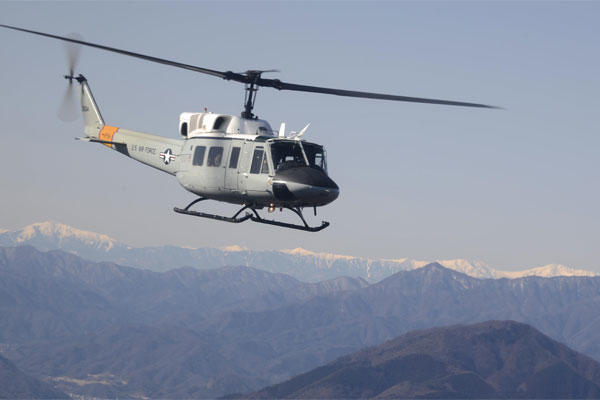YOKOTA AIR BASE, Japan -- Service members from the 459th Airlift Squadron invited Japan Ground Self-Defense Force (JGSDF) members from Camp Higashi-Tachikawa, to ride along in two UH-1N Iroquois helicopters Jan. 29, 2015, near Tokyo.
The JGSDF members were able to gain a better understanding of the Air Force's aerial formations, maneuvers and terminology. Being able to get on the same page enables the two services to function like a well-oiled machine should the need arise.
"The objective for this is to help introduce (JGSDF) to our procedures and how we fly our helicopters and help us understand how they fly theirs," said Capt. Thomas Powell, the 459th Airlift Squadron chief of current operations. "This would help if we ever wanted to do a joint mission between our helicopter units."
For the most part, JGSDF helicopter crews and U.S. crews operate the aircraft the same way. It's primarily the technical terms and jargon that are different.
"The big thing is to get the terminology correct between the two of us," Powell said. "So, if we say something to them, they know exactly what we're talking about."
While in the air with the U.S. service members, the JGSDF pilots observed several different formations such as staggered, combat cruise and combat spread, along with maneuvers like hook turns, check turns, digs and pinches.
"For us, it was extremely helpful to have a clear understanding of the tactics and equipment (U.S. forces) use and how they differ from ours," said Capt. Fujimoto, a JGSDF helicopter pilot.
Powell said that overall, this type of training is crucial, because it helps instill confidence in the JGSDF and U.S. service members.
"If they ever needed our help, we are available and willing to help them," he said. "At the same time, we're capable to fly with them in the same environment without causing a hazard or other problems."























